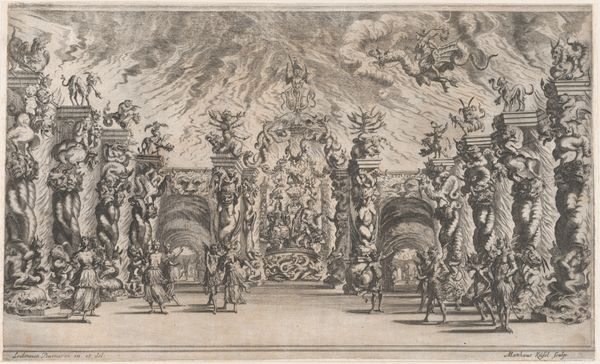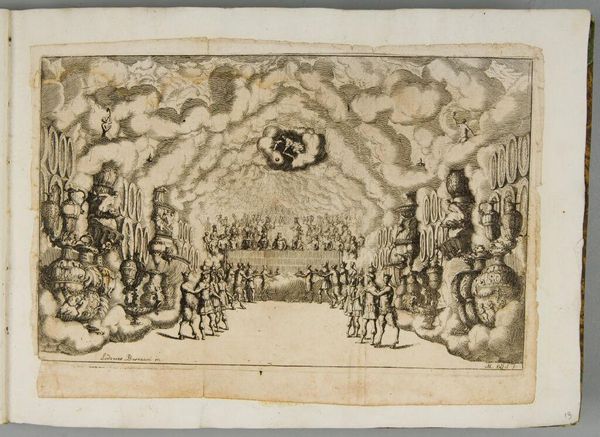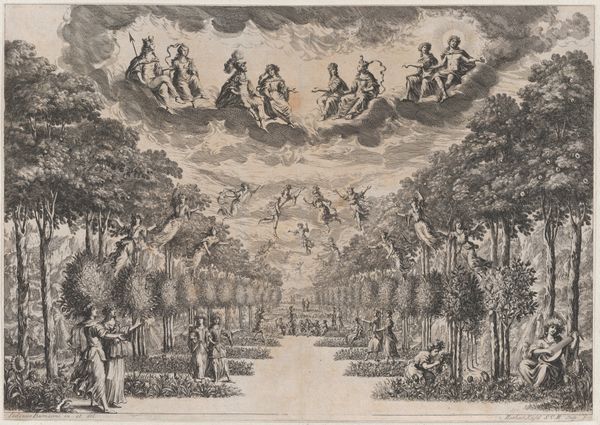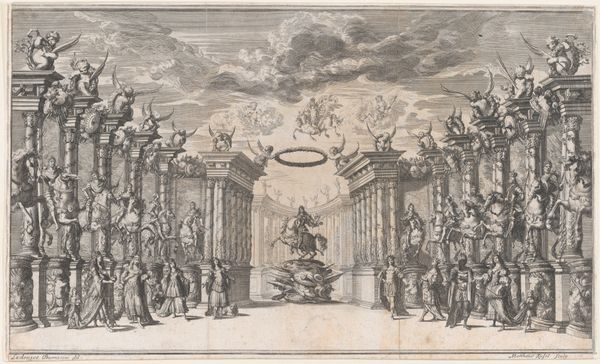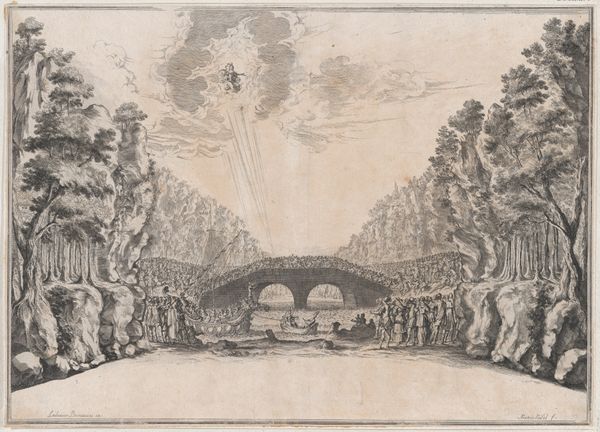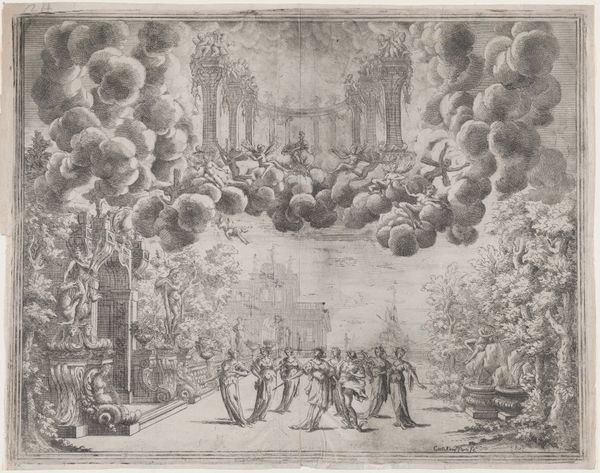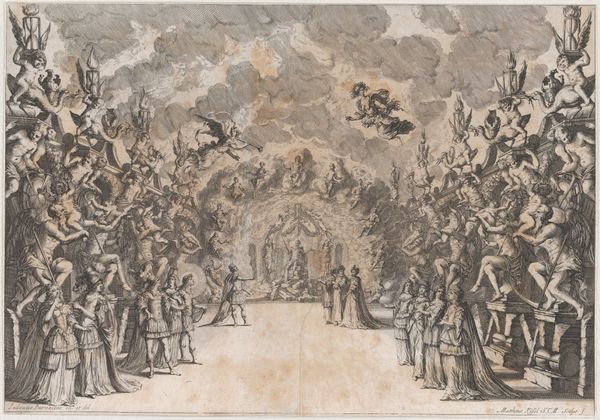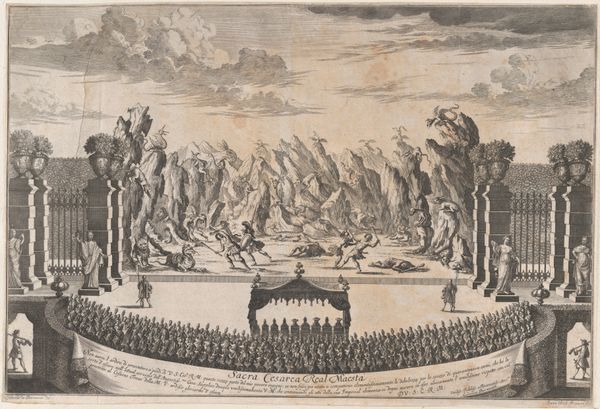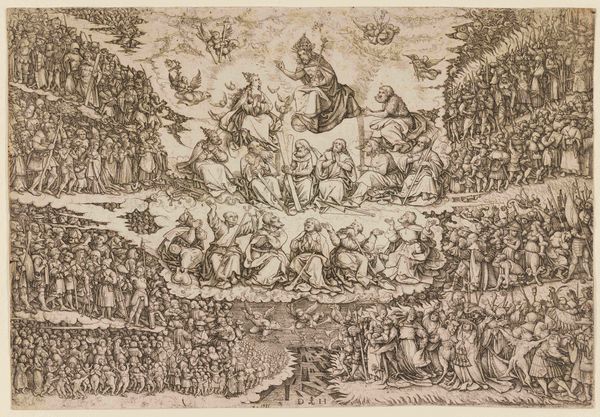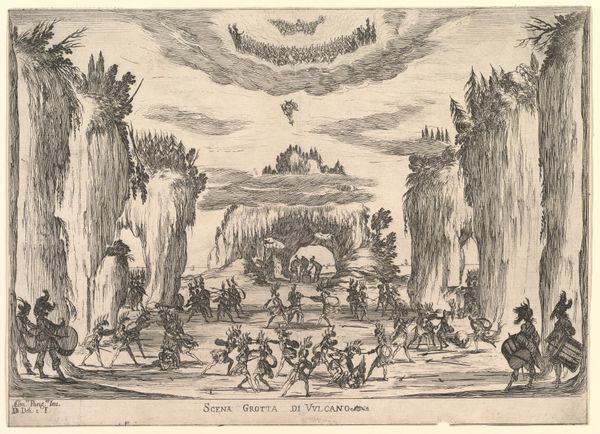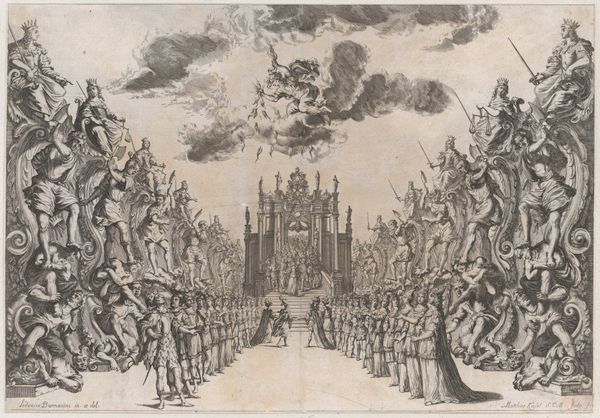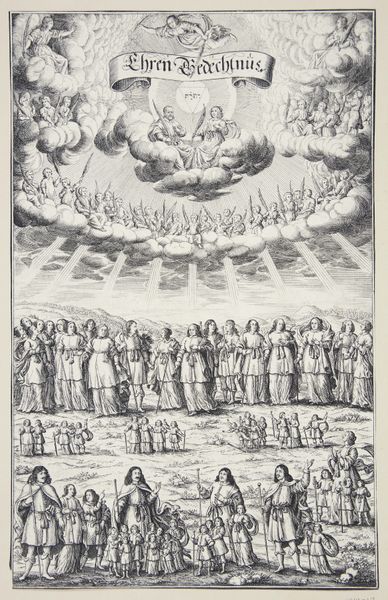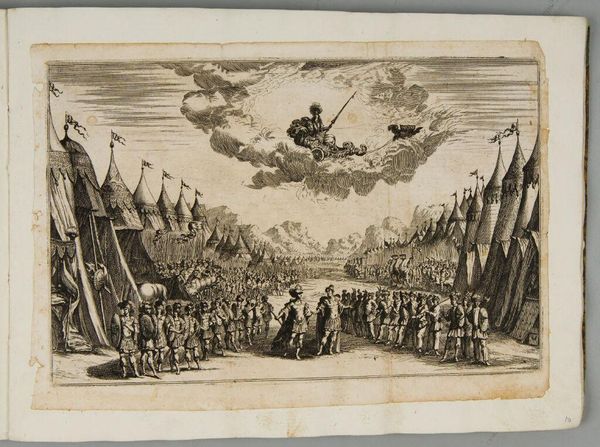
Kingdom of Jove with the banquet of the gods; set design from 'Il Pomo D'Oro' 1668
0:00
0:00
drawing, print, engraving
#
drawing
#
allegory
#
baroque
# print
#
line
#
history-painting
#
engraving
Dimensions: Sheet (Trimmed): 10 1/4 × 17 3/16 in. (26 × 43.6 cm)
Copyright: Public Domain
Editor: This is Mathäus Küsel's "Kingdom of Jove with the banquet of the gods; set design from 'Il Pomo D'Oro'", created in 1668 using engraving techniques. The overwhelming detail and almost theatrical staging give it a grand, almost dizzying feel. How do you interpret this work and its many layers? Curator: Well, let’s think about what a banquet signifies, especially a banquet of the gods. It’s a celebration, yes, but more profoundly, it’s about communal identity, shared power, and reinforced hierarchies. In the Baroque period, these types of images reaffirmed cultural values and stability. Editor: So, it’s not just a party scene, it’s a symbol? Curator: Precisely. Consider the figure of Jove – or Zeus, if you prefer the Greek interpretation – positioned centrally at the head of the table. He's not merely presiding; he represents divine order and authority. Everything, from the precise arrangement of the figures to the overwhelming symbolism that you noted, speaks to a meticulously constructed ideology. Editor: What about all the clouds and the elaborate vessels on the sides? They almost look like props in a play. Curator: They *are* props in a way! It's a stage design. The clouds indicate divinity and transcendence, while the ornate vessels emphasize opulence and abundance. It creates a spectacle to overwhelm the viewer, suggesting both earthly and celestial power. What kind of impact does this visual language have on you? Editor: It feels like controlled chaos, a spectacle designed to communicate very specific ideas about power and status. I now notice how much the image speaks of constructed authority rather than simply illustrating a myth. Curator: Indeed. Recognizing how such images manipulate symbolism helps us to understand the visual language of power in any era, not just the Baroque. It demonstrates that symbolic imagery communicates collective desires and aspirations that persist over time.
Comments
No comments
Be the first to comment and join the conversation on the ultimate creative platform.

